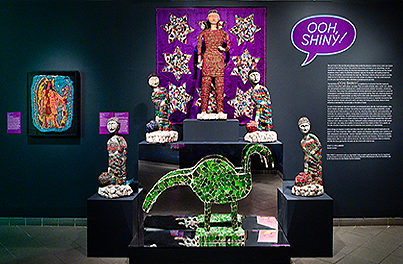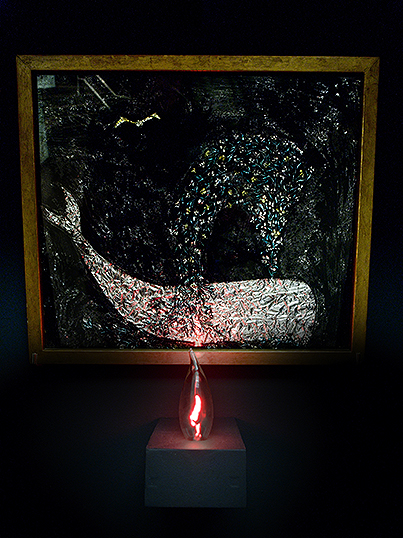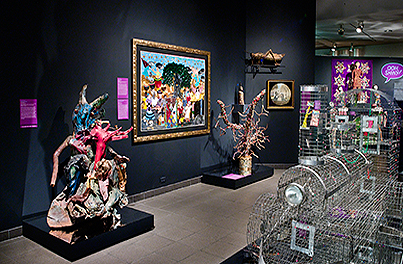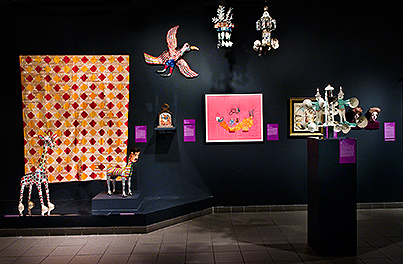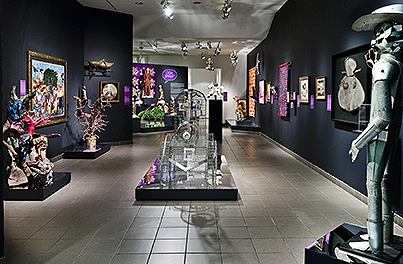APRON
Artist unidentified

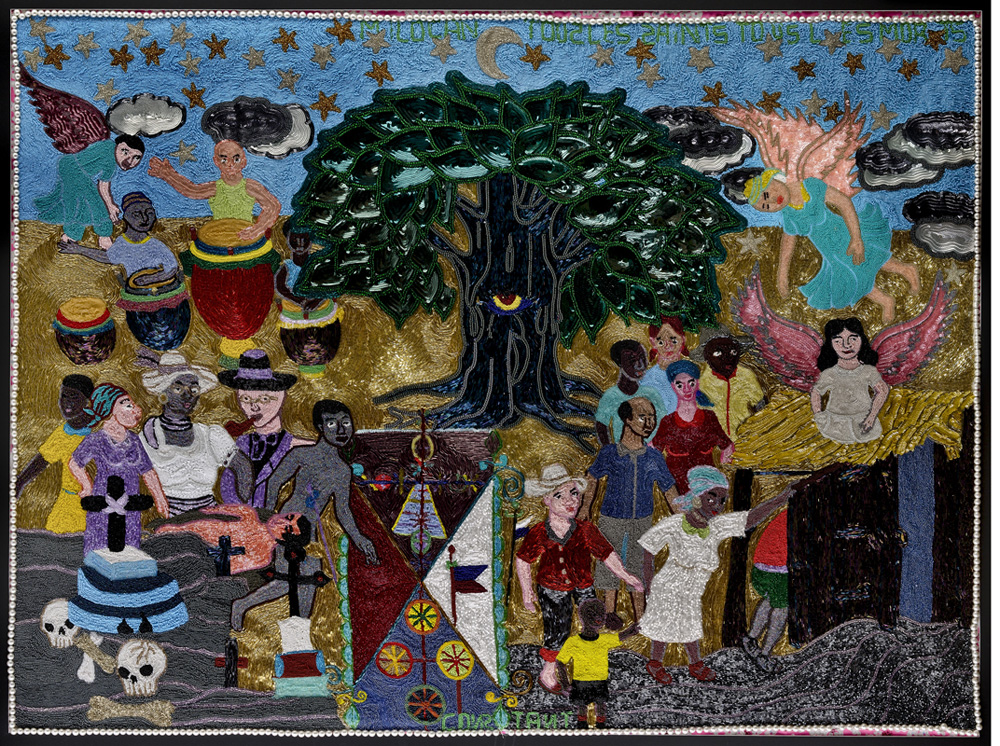
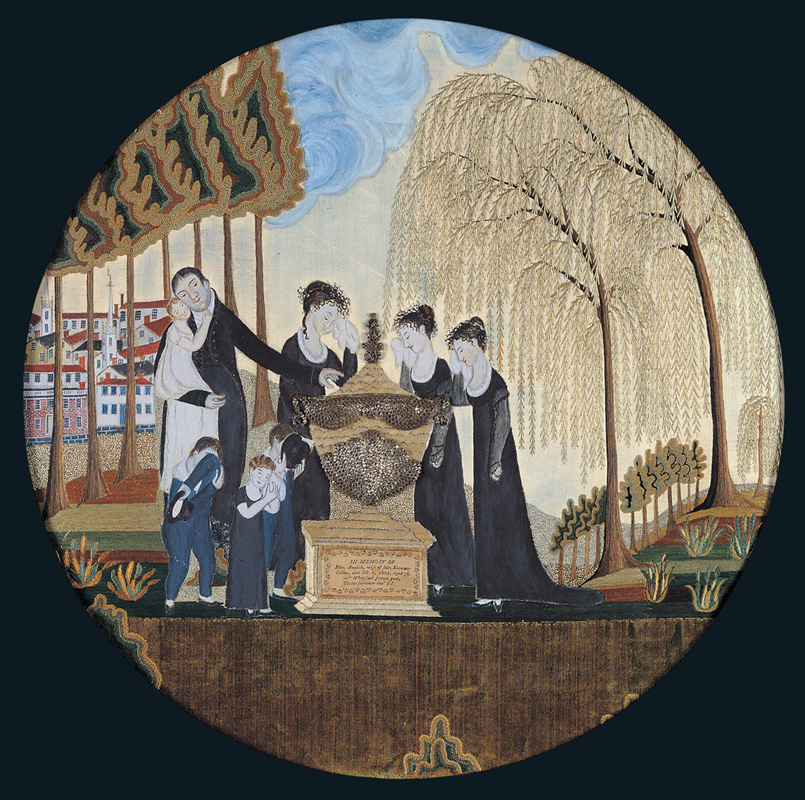
An attraction to shiny things is a primal human impulse. It may be instinctive and emotional, or profoundly meaningful within a cultural context. In the visual arts this has been expressed through the use of myriad materials that glitter and reflect. “Ooh, Shiny!” will highlight three centuries of artworks—ranging from needleworks by 18th-century schoolgirls to sculptures by contemporary icons including Howard Finster—that are embellished with such materials as spangles, mica flakes, glass, marble dust, sequins, glitter, and aluminum.
“Ooh, Shiny!” is sponsored, in part, by Joyce Berger Cowin, by public funds from the New York City Department of Cultural Affairs in partnership with the City Council, by Bloomberg Philanthropies, by the Ford Foundation, by The David Davies and Jack Weeden Fund for Exhibitions, and by the New York State Council on the Arts with the support of Governor Andrew Cuomo and the New York State Legislature.

Apron
Artist unidentified
Gobles, Michigan
1880–1900
Tin
29 1/2 x 33 in.
American Folk Art Museum, gift of Martin and Enid Packard, 1988.25.3
Photo by John Parnell, New York

Les Ceremonies Vodou Banner
Myrlande Constant (b. 1968)
Port-au-Prince, Haiti
c. 2000
Sequins and beads on fabric
42 1/2 x 56 1/2 in.
American Folk Art Museum, gift of Robert Brenner, 2012.3.1
Photo by Gavin Ashworth, New York

Mourning Piece for Mrs. Ebenezer Collins
Probably Lovice Collins (c. 1793–1847)
South Hadley, Massachusetts
1807
Watercolor, pencil, ink, silk thread, metallic thread, and chenille thread on silk and velvet with printed paper label
17″ diam. (sight)
American Folk Art Museum, Eva and Morris Feld Folk Art Acquisition Fund, 1981.12.8
Photo by John Parnell, New York
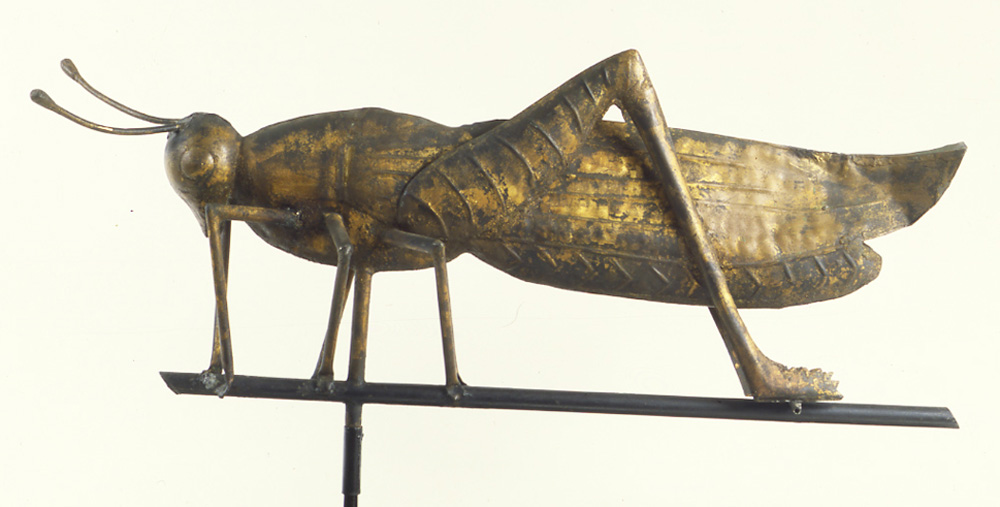
Grasshopper Weathervane
Artist unidentified
Probably Massachusetts or New York
c. 1880
Copper with gold leaf
17 x 35 x 9 in.
American Folk Art Museum, gift of Mr. and Mrs. Francis S. Andrews, 1982.6.6
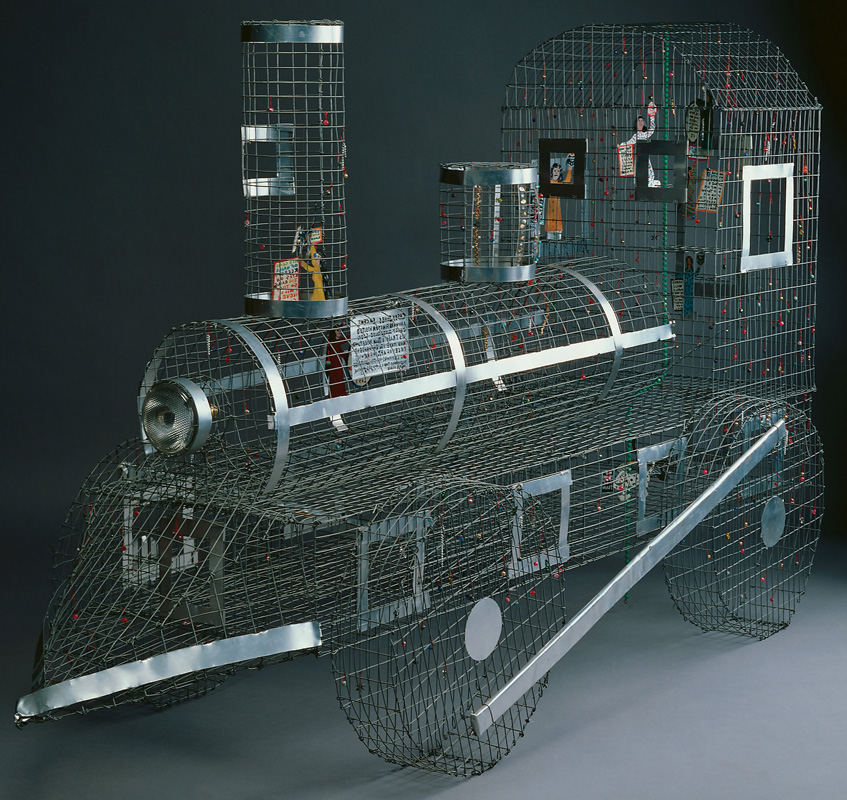
Train
Howard Finster (1916–2001)
Summerville, Georgia
1983
Wire, aluminum, headlight and bulb, beads, and found objects
American Folk Art Museum, gift of Elizabeth Ross Johnson, 1985.25.1
Photo by John Parnell, New York
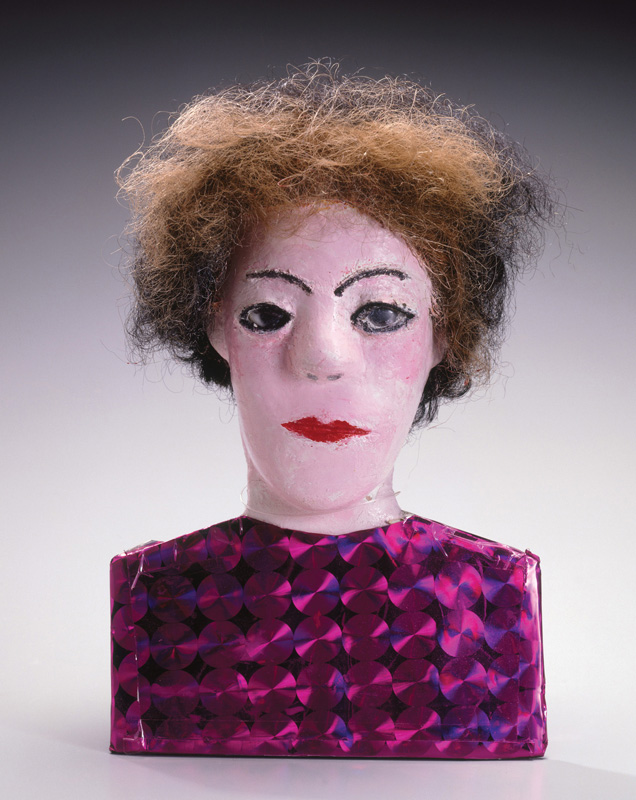
Portrait Bust
Gregorio Marzan (1906–1997)
New York City
c. 1986
Mixed media
14 x 9 x 4 in.
American Folk Art Museum, gift of Dorothea and Leo Rabkin, 1998.2.1
“Ooh, Shiny!” is sponsored, in part, by Joyce Berger Cowin, by public funds from the New York City Department of Cultural Affairs in partnership with the City Council, by Bloomberg Philanthropies, by the Ford Foundation, by The David Davies and Jack Weeden Fund for Exhibitions, and by the New York State Council on the Arts with the support of Governor Andrew Cuomo and the New York State Legislature.
